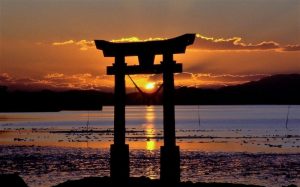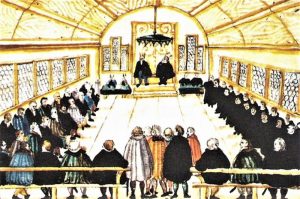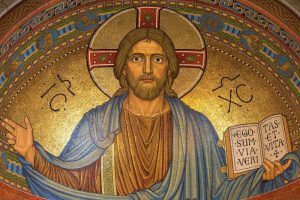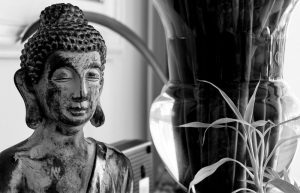Shinto
Shinto is a Japanese religion based on Kami worship or nature spirits. The term Kami refers to what is above the human condition or above man but is often translated as spirit or god.

- Type of religion: Polytheist
- Sacred books: Kojiki and Shoku Nihongi
- Origin: Japan
- Deities: Ame-no-minaka-nushi-no-kami (root of the universe) and the other kamis.
What is Shinto?
Shintoism (Shito means "divine way" in Japanese) is a thousand-year-old religion of Japanese origin based on the veneration of nature's spirits (called Kami). It has four branches that are: Koshitsu Shinto, Jinja Shinto, Shuha Shinto and Minzoku Shinto. The symbol that identifies it is the Torii, a portal at the entrance to temples. It is currently the second religion with the most followers in Japan.
The term Shinto (Chinese word meaning “Way of the Gods”) is the name given to the rites used in Japan to worship heaven and earth deities.
History
Shinto history is one of the oldest religions in the world and does not have a definite date of origin, as it was part of Japan’s ethnic culture and initially lacked a specific name.
Japanese decided to use the Chinese term Shinto (meaning “Way of the Gods”) to differentiate this cult from Buddhism – introduced in Japan in the 6th century – because they did not yet have a developed written language.
Like many Asian religions, it was linked to country life, veneration of ancestors, forces of nature, soul belief and union with the body after death.
It was proclaimed the religion of the Japanese state by the Emperor between 1868 and 1945 to stimulate national pride and reject Buddhism as a foreign religion.
Shintoism is the second most practiced religion in Japan, and currently there are four main types related to each other:
- Koshitsu Shinto (Imperial House Shinto)
- Jinja Shinto (Shinto Sanctuary)
- Shuha Shinto (Shinto Sects)
- Minzoku Shinto (Folk Shinto)
Founder
Shintoism does not have a definite founder because its origin is very ancient, and it lacks a sacred text and dogmas.
Shinto characteristics
Among Shinto characteristics, the following can be mentioned:
- It is the oldest religion in Japan.
- The fundamental doctrines affirm that Japan is the country of the gods and that their people descend from them.
- It has no founder.
- Among its sacred texts is the Kojiki, that tells the mythological origins of Japan and the emperor.
- He worships the “Kami” or spirits of nature. There are many types of Kami.
- The Japanese are sons of the Kami.
- Shinto rites include dances, prayers, cleansings, and healing or protective incantations.
Symbol
Torii is the best-known symbol of Shintoism and the icon with which it is graphically identified. It is a sacred portal for the gods that marks the boundaries between the profane world and gods’ world. This monument is located at the entrance of the Shinto temples.
Shinto gods
In Shinto there are more than 8 million gods or Kami, but the primordial couple is Izanagi and Izanami, who created the world, making Japan the only center and placing in it, a pillar that served as an axis between heaven and earth.
Amaterasu is the sun goddess and is the ancestor of the emperor.
She seeks a balanced relationship between nature, Kami and men. Kami are everywhere and are nature’s guardians and protectors.
Brave Japanese ancestors also become Kami after their deaths.
Shinto Rites
The rituals of Shintoism were performed through dances called “Kagura” to bridge the gap between man and gods.
In ancient times, a virgin woman danced to the Goddess Ame-no Uzume who possessed her so that, she could bless children and cure their illnesses through prayers.
Rituals are related to two fundamental concepts which are “pure” and “impure”. There are many ways to combat impurity such as the use of salt or rice.
There are three main rituals: abstention and circumvention of various elements in priests, accidental dishonor, and finally, the plea for decontamination of a serious act.
Before performing the rituals, believers must wash their hands and mouth.
Among the best known rituals can be mentioned: New Year’s Day and the Setsubun which takes place in spring and winter.
Sacred books
Shinto’s sacred texts are historical texts that relate the origin of Japan. Their names are Kojiki (meaning “record of ancient things”) and Shoku Nihongi.
How to cite this article?
Briceño V., Gabriela. (2019). Shinto. Recovered on 4 January, 2025, de Euston96: https://www.euston96.com/en/shinto/









